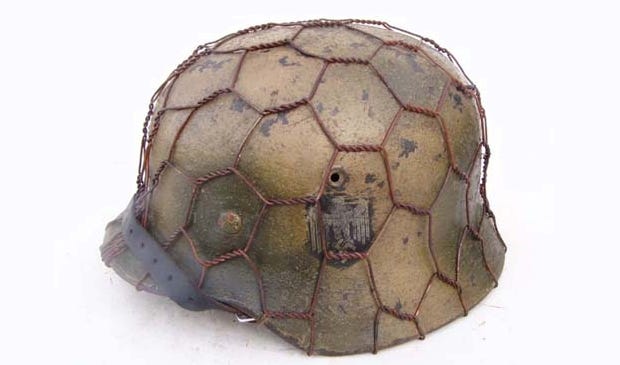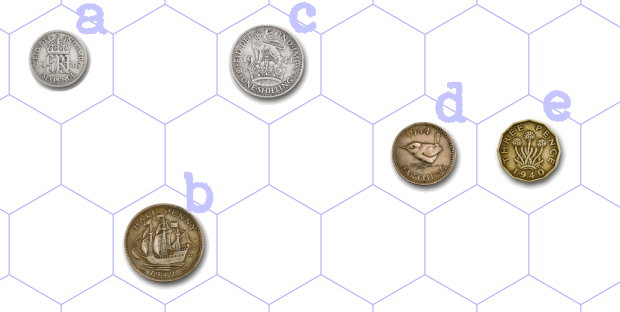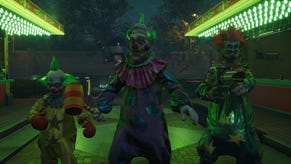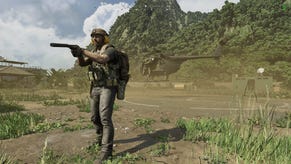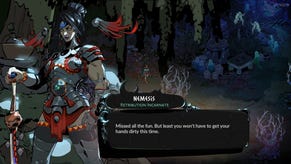The Flare Path: A Frank Hexchange
Exclusive interview with a wargaming legend
Yesterday morning, quite by chance, I found myself sharing a tuk-tuk with one of my personal heroes. The six sides and rotational/reflection symmetries, the 120 degree internal angles, the faint whiff of blood and cordite... I recognised Theo Hexagon, aka 'The Hex', the moment he hopped aboard. By the time we hit our first traffic-jam, I'd introduced myself, whipped out a voice recorder and commenced an impromptu interview. A transcript of that all-too-brief exchange follows. If you've ever waged war on a battlefield draped with outsized chicken wire, the 1200-or-so words beyond the break should prove interesting.
RPS: You're sure you don't mind?
Hex: Not at all. Be my guest.
RPS: Well, I guess it would be logical to start at the beginning. How did you get into gaming?
Hex: In the mid 1860s I was looking to diversify (at that time the honey industry was being hit hard by the rise of bottled preserves) and an opportunity came along to work with games pioneers Jaques of London. They wanted to give chess a new twist and thought I'd make an interesting square replacement. The result was the rather elegant Hexagonia.
Towards the end of the Nineteenth Century I was asked to replace squares in another popular strategy board game, Halma. An Otto Robert Maier project Stern-Halma sold fairly well in Germany but really took off when it crossed the Atlantic and was rebranded as Chinese Checkers.
RPS: When did you get involved in wargaming?
Hex: In the late 50s. I was recruited by the US government. They used me in various top secret research wargames. It was while participating in one of these hush-hush projects that I was spotted by board wargaming trailblazer Charles S. Roberts. 'Square' for ten years, the man behind Avalon Hill released his first batch of six-sided titles in '61. Gettysburg was a hexy conversion of the 1958 game of the same name. Chancellorsville and D-Day were entirely new designs.
RPS: What did Roberts see in you?
Hex: No offence to my brother-in-arms, the square, but while he tessellates beautifully and is dead easy to draw, his diagonal functionality has always been flawed. A diagonal move on a square grid is mathematically, visually, and implicitly quite different from an orthogonal one. The mover travels further, they trespass on flanking squares as they travel; in short, diagonal moves are messy, confusing moves. Employ me and you don't get issues like that. I'm also far better at representing sinuous rural topography like rivers, ridges, and forest edges.
RPS: But less good at representing regimented urban terrain?
Hex. Oh, sure. Yes. I've always been up front about that. If you're looking to build a modern UO/FIBUA game I might not be the best option. Napoleonic and similarly linear forms of warfare - ditto.
RPS: Over the years, some of your employers have struggled with grain and LOS calculation issues. There's been criticism of your vulnerability to gamey Zone of Control exploits. Do these digs hurt?
Hex: Not particularly. All perfectly regular grid systems encourage ZOC abuse and make determining LOS without recourse to complicated templates or independent tabletop style aids, tricky. I'm no silver bullet. However, used intelligently - backed by thoughtful rules - I'd argue I'm frequently the best tool for the job.
RPS: Let's head back to memory lane. What was your first computer game?
Hex: That depends a bit on your definition of 'computer game'. In 1953 Claude Shannon and E.F. Moore of the Bell Telephone Laboratories built a machine capable of playing Hex, a brain-blistering strategy game devised by Danish mathematician Piet Hein in 1942. The device represented the hexgrid board with an electrical resistor network, and aimed to increase the resistivity of that network through its moves (the moves of the human player caused short circuits).
It would be another 23 years before I participated in a computer strategy game with a military theme. In 1976, inspired by an encounter with a student who was attempting to digitize AH's Blitzkrieg, Chris Crawford coded 'Wargy' on a colossal 16k IBM 1130. The game relied on cardboard maps and counters from Panzer Leader. You plotted your moves using the physical components, entered the data, and then waited nervously while the machine did its thing. Despite its rudimentary AI, Wargy managed to trounce the tank forces of several experienced human players when introduced to the public at a wargaming convention in Nebraska in December '76. Two years later, reworked and retitled Tanktics, it was on sale to owners of the Commodore PET.
RPS: When did visual likenesses of your good self start appearing in computer wargames?
Hex: I guess that would have been around 1980. As I recall, it was Roger Keating, the Australian pioneer, who painted a wargaming hexgrid with pixels for the first time. His 'Conflict' for the Apple II (later published by SSI under the name Rebel Force) was a modern-day company-level battle sim depicting warfare between an armour-equipped Goliath and a militia-reliant David. There were five unit types, five forms of terrain, minefields, ZOCs, automatically triggered retreats... it all seemed awfully advanced at the time.
RPS: The Eighties were a good time for you?
Hex: Amazing. I started working with some very talented, very loyal people. John Tiller, Gary Grigsby, Joel Billings, Keith Brors, Norm Koger, Roger Keating, Ian Trout, Chuck Kroegel... more than thirty years on I'm still collaborating with a good few of the old crowd. Many are close friends. John is godfather to my oldest. Gary's swimming pool is six-sided in my honour. Joel has a portrait of me tattooed on his...
(At this point the tuk-tuk swerved to avoid a wandering water buffalo and the conversation was drowned out by the stream of expletives from our driver)
RPS: Career highlights?
Hex: I've been associated with so many great series over the years, it's almost impossible to single out particular games. If you held a Whitworth Rifle to my head, I guess I'd have to mention the Steel Panthers... John's Campaign and Squad Battles games... SSG's Decisive Battles... 2 By 3's monsters. The Panzer Generals paid for my beach house so I should probably name-check them too.
RPS: And outside traditional wargaming?
Hex: Getting the call from Firaxis in 2008 was pretty special.
RPS: Hexcells?
Hex: Don't tell Matthew Brown this but I'd happily work for him for free.
RPS: Knickers - this looks like the station. Before you go, of the PC projects you're working on at present are there any you're particularly excited about?
Hex: You've heard that The Operational Art of War 4 is in the pipeline? Obviously, it's lovely to be part of that. In August I'm off to Croatia to work on 2x2's Unity of Command sequel. That's sure to be fun. And of course I'm signed up for Johan Nagel's next game, the Afghanistan one...
(The tuk-tuk pulls up. Hex alights. We shake hands)
RPS: Pleasure to meet you!
Hex: Likewise! Oh, I think I forgot to mention AMAC2? I can count my aerial wargame credits on the fingers of one finger-four formation, so it's splendid to be involved in Alex's spiritual sequel to Flight Commander 2.
*****************************
The Flare Path Foxer
Ringed by tangled belts of birch trees and guarded (so the locals claim) by an army of featherless wereowls, it's hardly surprising the Maria Reactor was able to survive last week's defox. The other eight locations proved less resilient.
a Maria Reactor, Świerk-Otwock
b Trajan's Column, Rome (All is Well)
c Lyon–Saint-Exupéry Airport (Lord Bilisknir, phlebas)
d John Frost Bridge, Arnhem (Syt, billy_bunter)
e Tasman light rail station, San Jose (Matchstick, Rorschach617, AbyssUK)
f Sydney Kingsford Smith Airport (Lord Bilisknir)
g Chavasse Park, Liverpool (All is Well, AbyssUK)
h Hippodrome Wellington, Ostend (phlebas)
i Gagarin's Start, Baikonur Cosmodrome (phuzz)
***************
The IDFA don't go in for canonisation. If they did, Willi Fromm would certainly be Saint Willi of Frankfurt by now. From 1938 until his capture and execution in 1943, Willi ran a one man resistance campaign using foxers as his primary weapon. The people of Frankfurt often woke to find their noticeboards, walls, and trams plastered with subversive collages. One of his most famous images featured a portly magpie, a picture frame, a Fokker D.VII, an auroch, a syringe, and a German identity card belonging to one 'H. Meier'.
All answers in one thread, please.
